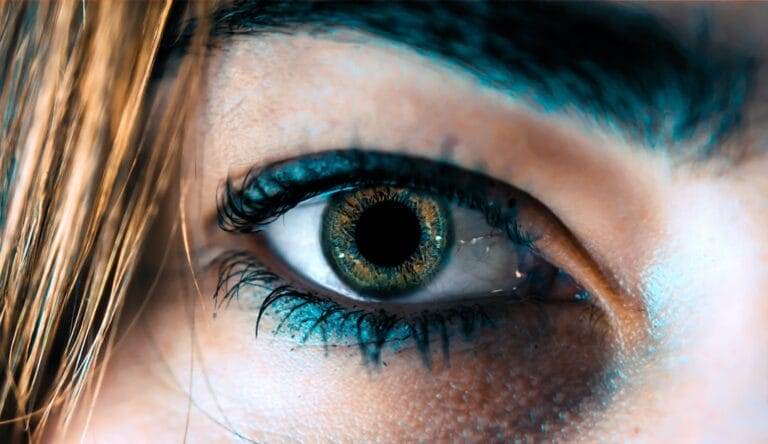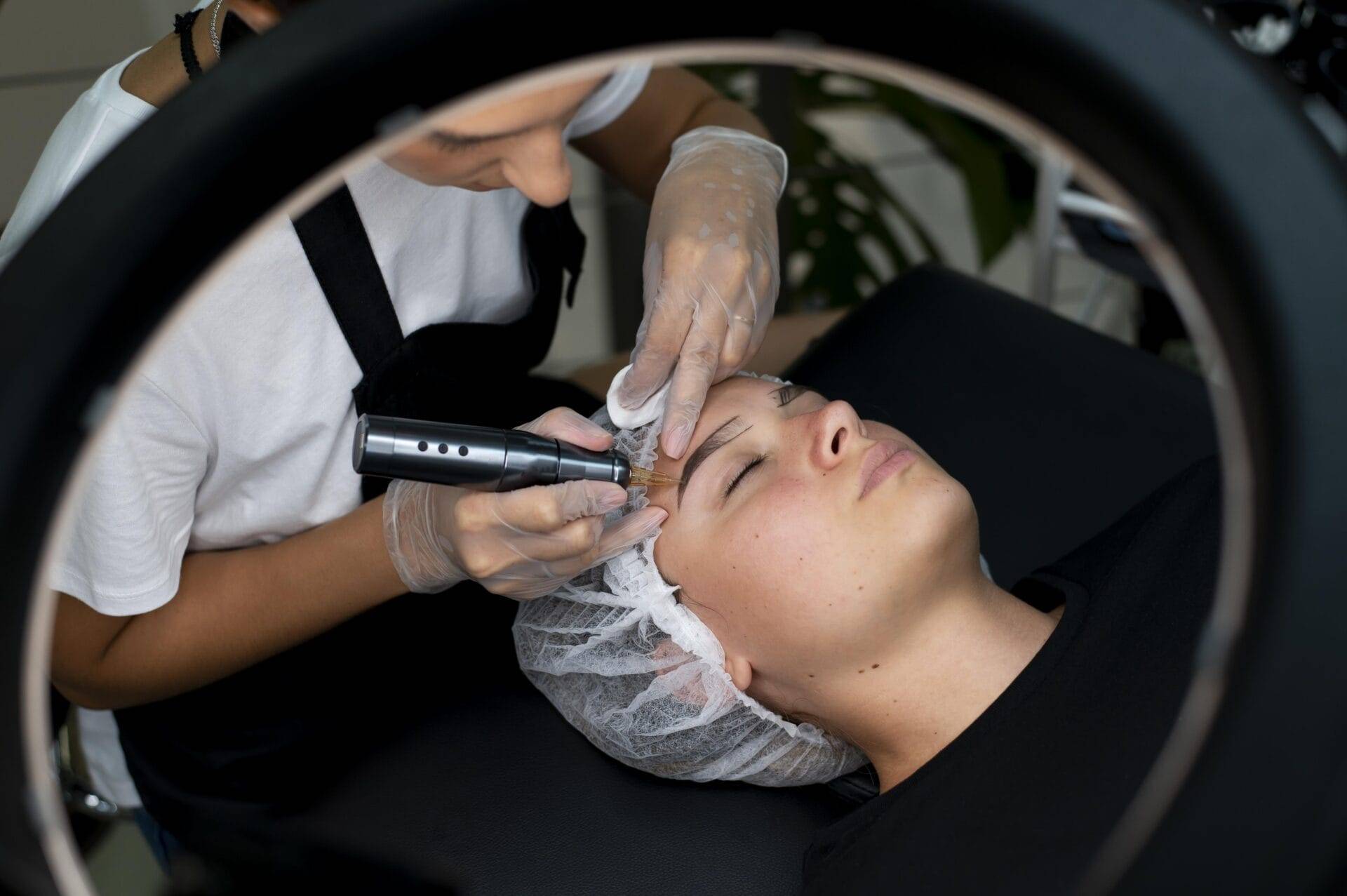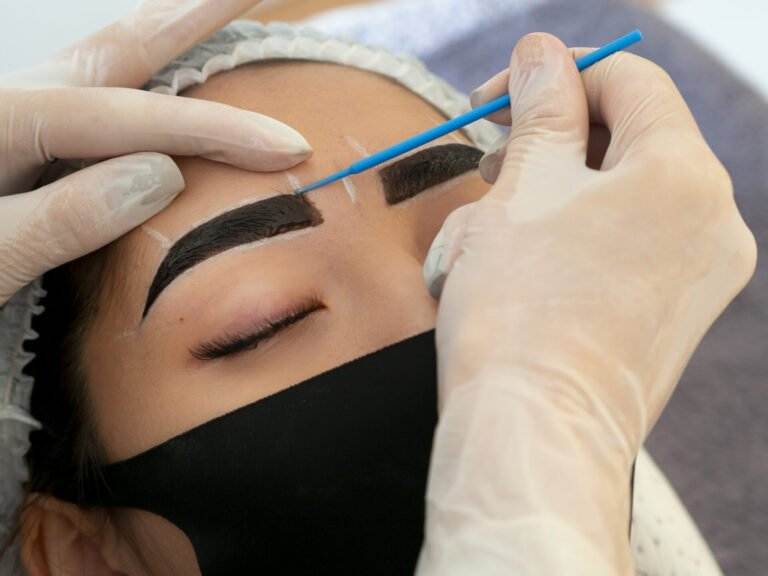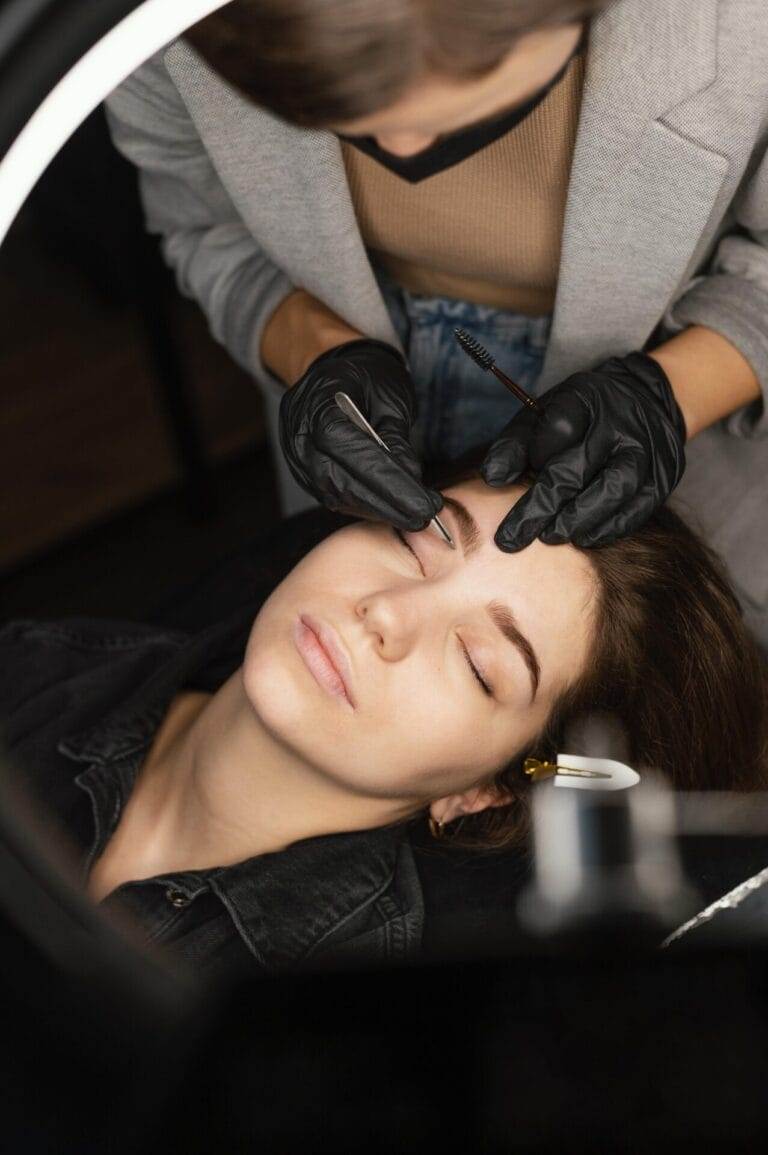Cosmetic tattoos, also known as permanent makeup or micropigmentation, are a form of tattooing that involves applying pigment to the skin to enhance certain features. Unlike traditional tattoos, which are purely decorative, cosmetic tattoos are designed to mimic the appearance of makeup. They can be used to enhance eyebrows, define lips, create eyeliner, and even reconstruct the areola after breast surgery.
The history of cosmetic tattoos dates back thousands of years. In ancient Egypt, both men and women would use natural pigments to enhance their features. In more recent times, cosmetic tattoos gained popularity in the 20th century, particularly in the 1920s and 1930s when Hollywood actresses began using them to achieve a more glamorous look.
There are several reasons why people choose to get cosmetic tattoos. Some individuals may have sparse or thin eyebrows and want to achieve a fuller, more defined look. Others may have uneven or pale lips and desire a more vibrant color. Cosmetic tattoos can also be beneficial for those with vision impairments or physical disabilities that make it difficult to apply traditional makeup.
Key Takeaways
- Cosmetic tattoos are a form of permanent makeup that can enhance features like eyebrows, lips, and eyeliner.
- There are different types of cosmetic tattoos, including microblading, powder brows, and lip blush, each with unique procedures and aftercare requirements.
- The healing process for cosmetic tattoos can take up to two weeks, during which time it’s important to avoid certain activities and follow aftercare instructions.
- Choosing a reputable tattoo artist is crucial for achieving optimal results and avoiding risks and complications like infection and scarring.
- To protect your cosmetic tattoo from sun damage, use sunscreen and avoid prolonged sun exposure, and if you experience an allergic reaction, seek medical attention immediately.
Types of Cosmetic Tattoos: Differences in Procedure and Aftercare
a) Eyebrow Tattoos:
Eyebrow tattoos are one of the most popular types of cosmetic tattoos. They involve using a tattoo machine or microblading technique to create hair-like strokes that mimic the appearance of natural eyebrows. The procedure typically takes about two hours and may require a touch-up session after a few weeks to achieve the desired result.
Aftercare for eyebrow tattoos is crucial for optimal results. It is important to keep the area clean and avoid picking or scratching at the scabs that form during the healing process. Applying a thin layer of ointment can help keep the area moisturized and prevent infection. It is also important to avoid excessive sun exposure and swimming during the healing process.
b) Lip Tattoos:
Lip tattoos, also known as lip blush or lip tinting, involve adding color and definition to the lips. The procedure can help enhance the natural shape of the lips, add volume, and create a more youthful appearance. Lip tattoos can be done using a tattoo machine or a manual hand tool.
Aftercare for lip tattoos is essential to ensure proper healing. It is important to keep the lips moisturized with a healing ointment and avoid picking or peeling any scabs that may form. It is also recommended to avoid spicy or acidic foods, as they can irritate the lips during the healing process. Sun protection is crucial for maintaining the color and preventing fading.
c) Eyeliner Tattoos:
Eyeliner tattoos are a popular choice for those who want to enhance their eyes without the hassle of applying eyeliner every day. The procedure involves tattooing a thin line along the lash line to create the appearance of fuller lashes. Eyeliner tattoos can be done in various styles, from a subtle enhancement to a more dramatic look.
Aftercare for eyeliner tattoos is similar to other cosmetic tattoos. It is important to keep the area clean and avoid rubbing or scratching at the eyes during the healing process. Applying a thin layer of ointment can help soothe any discomfort and prevent infection. It is also recommended to avoid wearing contact lenses or eye makeup for at least a week after the procedure.
d) Areola Tattoos:
Areola tattoos are often used to reconstruct the areola and nipple after breast surgery, such as mastectomy or breast augmentation. The procedure involves tattooing pigment onto the skin to create a realistic-looking areola and nipple. Areola tattoos can help restore confidence and improve body image for individuals who have undergone breast surgery.
Aftercare for areola tattoos is crucial for proper healing. It is important to keep the area clean and avoid picking or scratching at the scabs that may form. Applying a healing ointment can help keep the area moisturized and prevent infection. It is also recommended to avoid excessive sun exposure and swimming during the healing process.
e) Scalp Micropigmentation:
Scalp micropigmentation is a specialized form of cosmetic tattooing that is used to create the appearance of a full head of hair. The procedure involves tattooing tiny dots onto the scalp to mimic the look of hair follicles. Scalp micropigmentation can be used to treat hair loss, thinning hair, and receding hairlines.
Aftercare for scalp micropigmentation is similar to other cosmetic tattoos. It is important to keep the scalp clean and avoid picking or scratching at the scabs that may form. Applying a healing ointment can help soothe any discomfort and prevent infection. It is also recommended to avoid excessive sweating and sun exposure during the healing process.
Healing Process for Cosmetic Tattoos: What to Expect
The healing process for cosmetic tattoos can vary depending on the individual and the type of tattoo. In general, the initial healing period can take anywhere from one to two weeks, during which time the skin will go through various stages of healing.
During the first few days after getting a cosmetic tattoo, it is normal for the treated area to be red, swollen, and tender. The pigment may also appear darker than desired, but this will fade as the skin heals. Scabs may form as part of the natural healing process, and it is important not to pick or scratch at them, as this can affect the final result.
As the healing process continues, the treated area may start to itch or feel dry. This is a normal part of the healing process, but it is important not to scratch or rub at the area, as this can cause damage to the tattoo. It is also important to avoid exposing the tattoo to excessive moisture, such as swimming or soaking in hot tubs, as this can affect the healing process.
Aftercare for Cosmetic Tattoos: Best Practices for Optimal Results
| Aftercare for Cosmetic Tattoos: Best Practices for Optimal Results |
|---|
| Keep the area clean and dry for the first 24 hours |
| Avoid touching or picking at the tattoo |
| Avoid swimming, saunas, and hot tubs for at least 2 weeks |
| Avoid direct sunlight and tanning beds for at least 4 weeks |
| Apply a thin layer of ointment or moisturizer as directed by your artist |
| Avoid using makeup or other products on the tattoo until it is fully healed |
| Attend any follow-up appointments as scheduled |
Aftercare for cosmetic tattoos is crucial for achieving optimal results and ensuring the longevity of the tattoo. Proper aftercare can help prevent infection, minimize scarring, and promote faster healing. Here are some best practices for aftercare:
– Keep the treated area clean: It is important to gently clean the tattooed area with a mild, fragrance-free cleanser and lukewarm water. Avoid using harsh soaps or scrubbing the area, as this can irritate the skin.
– Apply a healing ointment: After cleaning the tattooed area, apply a thin layer of a healing ointment recommended by your tattoo artist. This will help keep the area moisturized and prevent infection. Avoid using petroleum-based products, as they can clog pores and hinder the healing process.
– Avoid picking or scratching: It is important to resist the urge to pick or scratch at scabs that may form during the healing process. This can cause damage to the tattoo and affect the final result. Let the scabs naturally fall off on their own.
– Avoid excessive sun exposure: Sun exposure can cause fading and discoloration of cosmetic tattoos. It is important to protect the treated area from direct sunlight by wearing a hat or using a sunscreen with a high SPF.
– Avoid swimming and saunas: Excessive moisture can affect the healing process of cosmetic tattoos. It is recommended to avoid swimming pools, hot tubs, and saunas during the initial healing period.
The Importance of Choosing a Reputable Tattoo Artist: Tips for Finding the Best in Pacific Beach, San Diego
Choosing a reputable tattoo artist is crucial when it comes to getting cosmetic tattoos. An experienced and qualified artist will have the necessary skills and knowledge to create a safe and aesthetically pleasing result. Here are some tips for finding the best tattoo artist in Pacific Beach, San Diego:
– Do your research: Start by researching different tattoo artists in the area. Look for artists who specialize in cosmetic tattoos and have a portfolio of their work. Read reviews and testimonials from previous clients to get an idea of their reputation.
– Check their qualifications: Ensure that the tattoo artist you choose is licensed and certified to perform cosmetic tattoos. They should have completed a training program and have the necessary certifications to ensure they are up to date with the latest techniques and safety protocols.
– Ask for recommendations: Reach out to friends, family, or colleagues who have had cosmetic tattoos and ask for recommendations. Personal referrals can be a great way to find a reputable tattoo artist.
– Schedule a consultation: Before committing to a tattoo artist, schedule a consultation to discuss your desired outcome and ask any questions you may have. This will give you an opportunity to assess their professionalism, cleanliness, and communication skills.
– View their portfolio: Ask to see examples of their previous work, particularly in the specific type of cosmetic tattoo you are interested in. Look for consistency in their work and ensure that their style aligns with your aesthetic preferences.
Common Risks and Complications of Cosmetic Tattoos: How to Avoid Them

While cosmetic tattoos are generally safe when performed by a qualified professional, there are some risks and complications that can occur. It is important to be aware of these risks and take steps to avoid them. Here are some common risks and complications of cosmetic tattoos:
– Infection: If proper hygiene practices are not followed during the tattooing process or during the healing period, there is a risk of infection. It is important to choose a reputable tattoo artist who follows strict sterilization protocols and to follow proper aftercare instructions.
– Allergic reactions: Some individuals may have an allergic reaction to the pigments used in cosmetic tattoos. This can cause redness, itching, swelling, and even blistering. It is important to undergo a patch test before getting a cosmetic tattoo to check for any allergies.
– Poorly executed tattoos: If the tattoo artist lacks experience or skill, there is a risk of ending up with a poorly executed tattoo. This can include uneven lines, incorrect color choice, or an unnatural appearance. It is crucial to choose a reputable and experienced tattoo artist to minimize this risk.
To avoid these risks and complications, it is important to do thorough research before choosing a tattoo artist. Ensure that they have the necessary qualifications and certifications, and ask to see examples of their previous work. It is also important to follow proper aftercare instructions and seek medical attention if you experience any unusual symptoms or complications.
Touch-Up and Maintenance for Cosmetic Tattoos: When and How Often
Touch-ups are often necessary for cosmetic tattoos to maintain their appearance and longevity. The frequency of touch-ups will depend on several factors, including the type of tattoo, the individual’s skin type, and their lifestyle. Here are some guidelines for touch-ups and maintenance:
– Eyebrow tattoos: Eyebrow tattoos typically require a touch-up session after 4-6 weeks to fill in any areas that may have faded or healed unevenly. After the initial touch-up, maintenance touch-ups may be needed every 1-2 years to maintain the desired shape and color.
– Lip tattoos: Lip tattoos may require a touch-up session after 4-6 weeks to enhance the color and ensure even healing. Maintenance touch-ups may be needed every 2-3 years to maintain the vibrancy of the color.
– Eyeliner tattoos: Eyeliner tattoos usually require a touch-up session after 4-6 weeks to perfect the line and ensure even healing. Maintenance touch-ups may be needed every 1-2 years to maintain the desired intensity of the eyeliner.
– Areola tattoos: Areola tattoos may require a touch-up session after 4-6 weeks to adjust the color and ensure even healing. Maintenance touch-ups may be needed every 2-3 years to maintain the desired appearance.
– Scalp micropigmentation: Scalp micropigmentation may require a touch-up session after 4-6 weeks to fill in any areas that may have faded or healed unevenly. Maintenance touch-ups may be needed every 3-5 years to maintain the appearance of a full head of hair.
It is important to consult with your tattoo artist to determine the best schedule for touch-ups and maintenance based on your individual needs and preferences.
How to Protect Your Cosmetic Tattoo from Sun Damage: Tips and Tricks
Sun exposure can cause fading and discoloration of cosmetic tattoos, so it is important to take steps to protect them from sun damage. Here are some tips and tricks for protecting your cosmetic tattoo from the sun:

– Wear a hat: When spending time outdoors, wear a wide-brimmed hat or a cap to shade the treated area from direct sunlight. This will help prevent fading and discoloration.
– Use sunscreen: Apply a sunscreen with a high SPF to the treated area before going outside. Look for a sunscreen that is specifically formulated for use on tattoos, as these tend to be gentler on the skin and less likely to cause irritation.
– Avoid tanning beds: Tanning beds can also cause fading and discoloration of cosmetic tattoos. It is best to avoid using tanning beds altogether, especially during the initial healing period.
– Seek shade: When possible, seek shade or stay indoors during the peak hours of sunlight, typically between 10 am and 4 pm. This will help minimize sun exposure and protect your cosmetic tattoo.
By following these tips and tricks, you can help protect your cosmetic tattoo from sun damage and ensure its longevity.
What to Do If You Experience an Allergic Reaction to Your Cosmetic Tattoo: Steps for Treatment
While allergic reactions to cosmetic tattoos are rare, they can occur in some individuals. If you experience symptoms of an allergic reaction, it is important to seek medical attention as soon as possible. Here are some steps for treatment:
– Remove any potential irritants: If you suspect that you are having an allergic reaction to your cosmetic tattoo, remove any potential irritants, such as makeup or ointments, from the affected area.
– Seek medical attention: Contact your healthcare provider or dermatologist to discuss your symptoms and seek appropriate treatment. They may recommend over-the-counter antihistamines or prescribe topical corticosteroids to reduce inflammation and relieve itching.
– Follow aftercare instructions: It is important to continue following proper aftercare instructions during the healing process, even if you are experiencing an allergic reaction. This will help prevent infection and promote faster healing.
To prevent allergic reactions to cosmetic tattoos, it is recommended to undergo a patch test before getting the tattoo. This involves applying a small amount of the pigment to a small area of skin and monitoring for any adverse reactions. If you have a history of allergies or sensitive skin, it is especially important to undergo a patch test.
Final Thoughts: The Benefits and Risks of Cosmetic Tattoos, and How Embellish PB Can Help
Cosmetic tattoos can be a great option for those looking to enhance their features and simplify their daily beauty routine . They offer the convenience of waking up with perfectly shaped eyebrows or defined lips without the need for daily makeup application. Additionally, cosmetic tattoos can help individuals with medical conditions such as alopecia or scarring regain their confidence and feel more comfortable in their own skin.
However, it is important to consider the potential risks associated with cosmetic tattoos. The procedure involves injecting pigments into the skin, which can lead to allergic reactions or infections if not done properly. It is crucial to choose a reputable and experienced tattoo artist who follows strict hygiene practices to minimize these risks.
At Embellish PB, we prioritize safety and quality in our cosmetic tattoo services. Our team of skilled and certified artists ensures that all procedures are performed in a clean and sterile environment. We use high-quality pigments that are hypoallergenic and long-lasting, providing our clients with beautiful and safe results.
In addition to our commitment to safety, we also offer a range of cosmetic tattoo options to suit individual preferences. Whether you’re looking for microblading for your eyebrows, lip blush for a natural-looking pout, or eyeliner tattoo for enhanced eyes, we have you covered. Our artists work closely with clients to understand their desired outcome and create customized designs that complement their unique features.
Overall, cosmetic tattoos can be a game-changer for those seeking long-lasting beauty enhancements. With the right precautions and a skilled artist like those at Embellish PB, you can enjoy the benefits of cosmetic tattoos while minimizing the associated risks. Contact us today to schedule a consultation and discover how we can help you achieve your desired look safely and beautifully.
For more information on the healing process and aftercare for cosmetic tattoos, check out our detailed article: Healing Process and Aftercare for Cosmetic Tattoos. This article provides a comprehensive guide on what to expect during the healing process of different types of cosmetic tattoos, as well as best practices for aftercare to ensure optimal results. Whether you’re interested in eyebrow tattooing, microblading, or other forms of cosmetic tattooing, this article will provide you with the information you need to make informed decisions and take care of your new tattoo.
FAQs
What are cosmetic tattoos?
Cosmetic tattoos, also known as permanent makeup or micropigmentation, are a form of tattooing that involves depositing pigment into the skin to enhance or mimic the appearance of makeup.
What types of cosmetic tattoos are there?
There are several types of cosmetic tattoos, including eyebrow tattoos, eyeliner tattoos, lip tattoos, and areola tattoos.
What should I expect during the healing process?
During the healing process, it is normal to experience some swelling, redness, and tenderness in the treated area. The tattoo may also appear darker or more intense immediately after the procedure, but will gradually fade over time.
How long does the healing process take?
The healing process can take anywhere from 7 to 14 days, depending on the type of cosmetic tattoo and the individual’s healing process.
What is the best aftercare for cosmetic tattoos?
The best aftercare for cosmetic tattoos includes keeping the treated area clean and dry, avoiding exposure to sunlight and water, and avoiding picking or scratching at the tattoo. It is also important to follow any specific aftercare instructions provided by the tattoo artist.
Can I wear makeup after getting a cosmetic tattoo?
It is recommended to avoid wearing makeup on the treated area for at least 7 days after the procedure to allow for proper healing. After that, it is safe to wear makeup as long as it is applied gently and not rubbed or scrubbed onto the tattoo.






